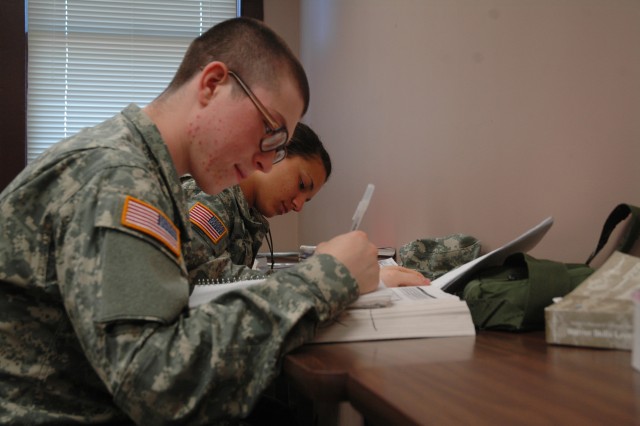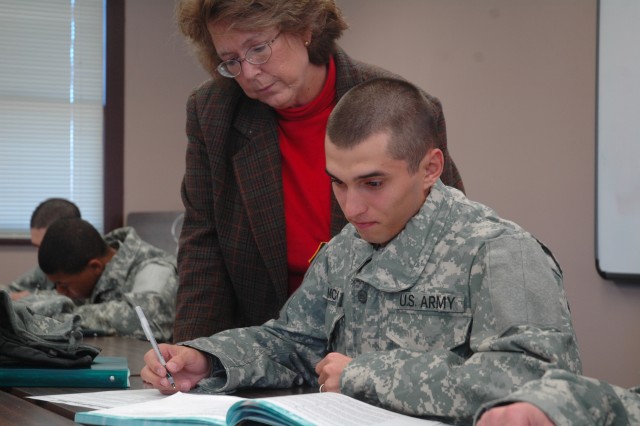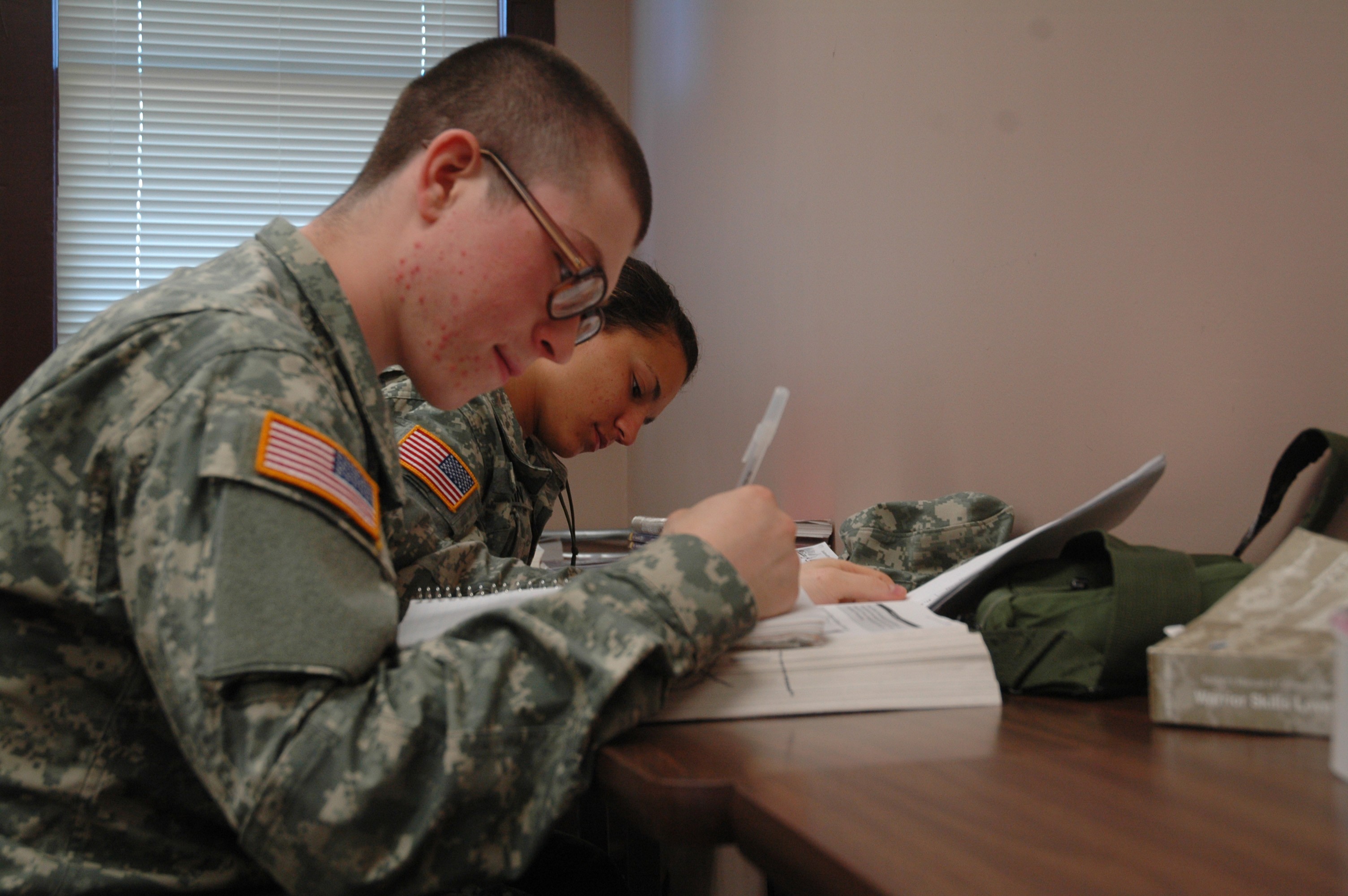FORT JACKSON, S.C. (Army News Service, Feb. 11, 2009) - It's not your typical classroom; even the walls suggest a smart salute and squared-away military bearing.
February marks the six-month point for the Army Preparatory School, or APS, at Fort Jackson, S.C., a pilot program that provides future Army recruits with the educational requirements necessary for Army service. Every APS student meets or exceeds every other requirement for enlistment, officials said, except having a high-school diploma or equivalent.
The school opened its doors in August 2008 with two recruits and has steadily grown each week. To date, 766 Soldiers have obtained their General Educational Development, or GED and moved on to Basic Combat Training.
"The Army has always been an institution where citizens find opportunities," said Lt. Gen. Benjamin Freakley, commander of the U.S. Army Accessions Command. "The Army Prep School is doing just that - giving young Americans the opportunity they wouldn't get elsewhere."
The school currently has the capacity to train 240 students each week. Since APS has a 98-percent graduation rate, with its current success, the Army expects that nearly 1,500 Soldiers will graduate from the course and move toward successful Army careers by the end of the fiscal year.
The average APS student's score currently rests at 576 out of 800 possible points on the GED -- higher than the 2007 national average of 531. The point difference could be a result of APS' approach to instruction.
"About 10 percent of our students have attempted to pass the GED in the past year but failed," said Capt. Brian Gaddis, the APS company commander. "Most were unsuccessful due to the outside distractions they had back home. We take all those distractions away."
Early results show many APS students continue that success after graduation and go on to excel in basic training among their unit's non-APS graduates. For example, APS graduates scored higher in Basic Rifle Marksmanship, with 93 percent qualifying on their first attempt, compared to 70 percent unit-wide, Gaddis said.
Most APS graduates met the Army standard on their first Army Physical Fitness Test; the average APFT score for APS graduates was 245, compared to the unit average of 230, Gaddis added.
"These Soldiers joined the Army to obtain their GED and have already seen positive results from joining the Army," said Capt. Michael Clark, basic training company commander of Company F, 2nd Battalion, 13th Infantry Regiment. "I would gladly take a whole company of these Soldiers because I know they 100-percent want to be here."
APS' focus is not solely on the younger population. While the average age of the students is slightly older than 21, the range of students obtaining their GED is as old as 41 and as young as 17.
If the program continues to progress successfully, new programs and schoolhouses could open at other basic training installations around the country.
In an era when less than 30 percent of the American population is qualified for military service, the Army is developing ways to prepare those who wish to serve their country.
"I am so thankful this program came around," said Pvt. Kyle Rucker, the first student to graduate from APS. "If it hadn't, I would still be working a dead-end job."
Seeing Soldiers like Rucker succeed is proof to Gaddis that the program is on the right track.
"This is not just great for the Army, this is great for the Soldiers," he said. "We're changing lives here."




Social Sharing